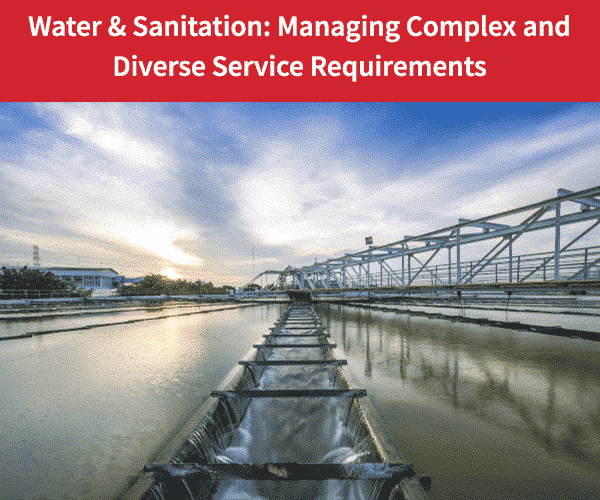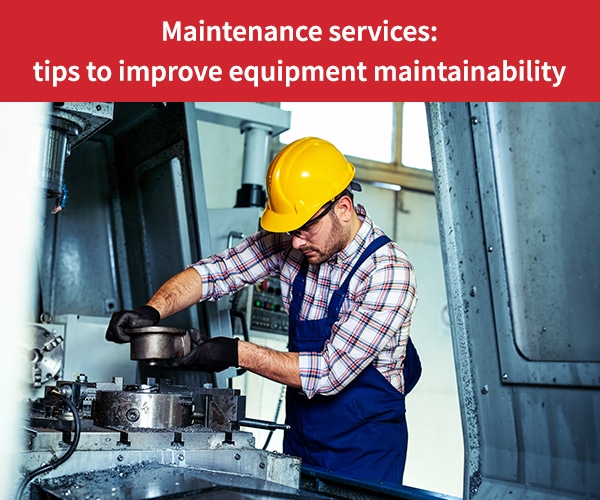
- Field Service Management
- Maintenance
- Gestion d’interventions
- Optimization
- Industries
How to Manage Water & Sanitation Service Requirements
Providing services for water management and sanitation systems is a challenging business with a wide range of requirements. Wastewater must be collected and disposed of, pipelines and drain connections maintained, sewage sludge treated, and grease traps emptied and cleaned. To ensure wastewater doesn’t seep into the ground and pollute it, all of these tasks must be completed quickly.
This means service companies need tools that allow them to optimize the way they manage their teams and their service activities. Water is a precious asset that’s vital for life. Because it’s a limited resource, it’s very important that we economize water use, distribute it in the most optimal way possible and ensure groundwater does not become contaminated. We must also ensure that significant water leaks do not occur in homes, on roads, or in public or private institutions. This will help to avoid water shortages, particularly in dry seasons, and keep costs down for citizens, businesses and governments. To reduce the risks of disease, insect infestations and toxic soil conditions, we must also ensure that untreated wastewater is never disposed of in nature.
Drain, repair, connect, empty: Service is complex and variable
Private companies or local authorities are responsible for all aspects of water management:
- Collecting wastewater and rainwater
- Maintaining and repairing pipelines
- Configuring networks
- Connecting sewers
- Emptying and treating sewage sludge
- Cleaning, draining and repairing pipelines
- Inspecting pipelines with cameras to anticipate faults
To provide fast and effective service for all of these different requirements, field service providers need technicians with a wide variety of specialized skills. They also need powerful service management tools.
Identify the most competent technician for a given problem
To provide effective service, companies that provide maintenance for water and sanitation must adopt a utilities field service management solution that can manage the high volume and varied nature of the services they provide. Operations managers at service companies must be able to identify the most competent technician for the job and see their availability in real time as soon as a private company or local authority alerts them to a problem with the distribution network, pipeline leak or water treatment.
View schedules to dispatch the right technician
With a field service management solution, dispatchers can easily see the technician’s skills and profile. They have access to information about technicians’ specializations, most recent service calls and schedules. They also can see details such as the number of technicians available as well as service volumes, locations and timing. This insight allows them to dispatch the optimal technician for the job as quickly as possible. Ideally, the field service management solution also includes geolocation features so dispatchers can estimate travel times between service locations.
Offer preventive maintenance services
While field service providers must always be prepared to deal with emergencies, prevention and maintenance tasks for infrastructure and pipelines are the mainstay of their activities. In some locations, distribution networks and wastewater infrastructure are quite old. As a result, the ability to anticipate problems before they occur is important. Using a camera to see the insides of buried pipes on a television screen is a good way to gather information about the condition of the pipes and identify preventive maintenance tasks. The service management solution should include these types of capabilities so they can be offered to water management companies or local authorities.
Choose a solution that integrates with the information system
The field service management solution must integrate with the corporate information system and other tools so that information about previously completed service tasks on the pipes in a municipality — the types of materials used, installation dates, last service date — or data about the network topography can be included. When all of this information is centralized in the service management solution, it can be delivered to technicians’ smartphones and other mobile devices. The solution must also provide customer details, such as name, address, telephone number and services needed. And it should offer geolocation capabilities and the ability for customers to electronically sign service reports so technicians can email customers the completed and signed forms from their mobile application. With paperless processes, field service providers can increase the traceability of their transactions and provide proof of completed tasks should legal issues arise.
Go digital to attract and retain field technicians
Field service technicians must be able to use their smartphone or mobile device to send the information contained in their service reports back to the corporate information system. Service companies can then use this information to improve their knowledge of the customer so they can offer more personalized services and anticipate service requirements. When technicians can write their service report on their smartphone or mobile device, they can avoid extra trips back to the office. They have more autonomy, and they can save time. Younger technicians from generations Y and Z will appreciate the ability to work in a digital environment. In fact, the ability to take advantage of technology is one of the factors they use to determine companies they want to work for. With a shortage of skilled technicians and high turnover rates, service companies must do everything they can to attract and retain talent. As service companies face increasingly complex and varied service requirements, they need to become more efficient. With a field service solution for sanitation service companies that allows them to send the right technician to customer sites very quickly, gain insight into technicians’ activities, and move to electronic customer files, they have everything needed to optimize their operations.
Our similar articles.
-
- Technician
- Field Service Management
- Maintenance
- Gestion d’interventions
What statistics tell us about the future of field service management
May 31, 2018 -
- Productivity
- Maintenance
- Internet of Things
- Technologies
- Productivité
- Analytics
Predictive maintenance: Prevention is better than cure!
May 15, 2018 -
- Productivity
- Maintenance
- Gestion d’interventions
- Optimization
- Technologies
- Productivité
How to optimize equipment maintainability
November 18, 2020


